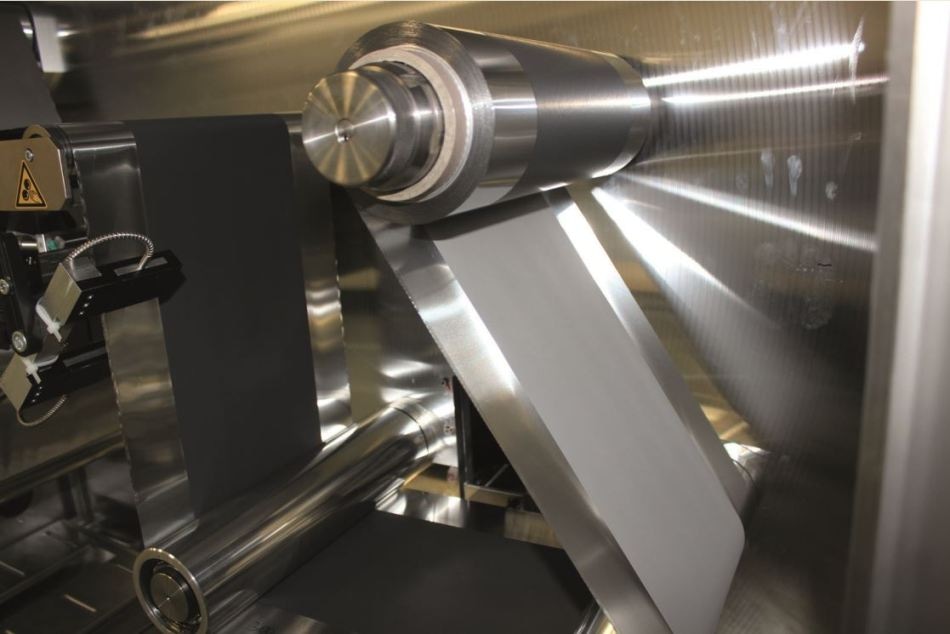May 3 2017
 Production of the bipolar electrode on a pilot scale. CREDIT: Photo Fraunhofer IKTS.
Production of the bipolar electrode on a pilot scale. CREDIT: Photo Fraunhofer IKTS.
At present, electric cars cannot be used to travel to far-away places as their batteries take up a great deal of space. Researchers from the Fraunhofer Institute for Ceramic Technologies and Systems IKTS have now stacked large cells on top of each another to provide the vehicles with more power.
Preliminary investigations in the laboratory have been favorable. At the moderate range, the researchers and their collaborators have been aiming to accomplish around 1000 km for the electric vehicles.
According to the model, electric cars are assembled with hundreds to thousands of independent battery cells, each of which is enveloped by a housing connected to the car through cables and terminals, and monitored through sensors. Over 50% of the space is occupied by the housing and the contacts. Hence it is impossible to pack the cells densely together as needed, and the complex design occupies considerable space. Another problem is the generation of electrical resistances at the connections of the small-scale cells, resulting in the reduction of power.
More space for batteries
The Fraunhofer Institute for Ceramic Technologies and Systems IKTS in Dresden and its collaborators ThyssenKrupp System Engineering and IAV Automotive Engineering have joined under the brand name EMBATT to transfer the bipolar principle of the fuel cells to the lithium battery. In this technique, rather than connecting individual battery cells side-by-side separately in smaller sections, the cells are directly stacked on each other over a large area, thus avoiding the need for the entire structure for the housing and the contacts. Thus, more number of batteries can be assembled into the electric vehicle. The direct connection of the stacked cells enables the current to flow across the entire surface of the battery, thus reducing the electrical resistance to a great extent. The design of the electrodes in the battery enables them to release and absorb energy in a quick way. “With our new packaging concept, we hope to increase the range of electric cars in the medium term up to 1000 kilometers,” stated Dr Mareike Wolter, Project Manager at Fraunhofer IKTS. The technique has already been demonstrated in the laboratory.
Ceramic materials store energy
A highly significant component in the battery is the bipolar electrode, which is a metallic tape coated with ceramic storage materials on either sides. Consequently, one side acts as the cathode and the other side as the anode. Being the heart of the battery, the bipolar electrode stores energy. “We use our expertise in ceramic technologies to design the electrodes in such a way that they need as little space as possible, save a lot of energy, are easy to manufacture and have a long life,” stated Wolter. The researchers mix the ceramic materials in the form of powders with electrically conductive materials and polymers to make a suspension. “This formulation has to be specially developed – adapted for the front and back of the tape, respectively,” explained Wolter. The Fraunhofer IKTS employs a roll-to-roll technique for applying the suspension to the tape. “One of the core competencies of our institute is to adapt ceramic materials from the laboratory to a pilot scale and to reproduce them reliably,” stated Wolter, outlining the proficiency of the Dresden researchers. The subsequent planned move is the advancement of larger battery cells and their use in electric cars. The goal of the collaborators is to carry out the preliminary tests in vehicles by the year 2020.